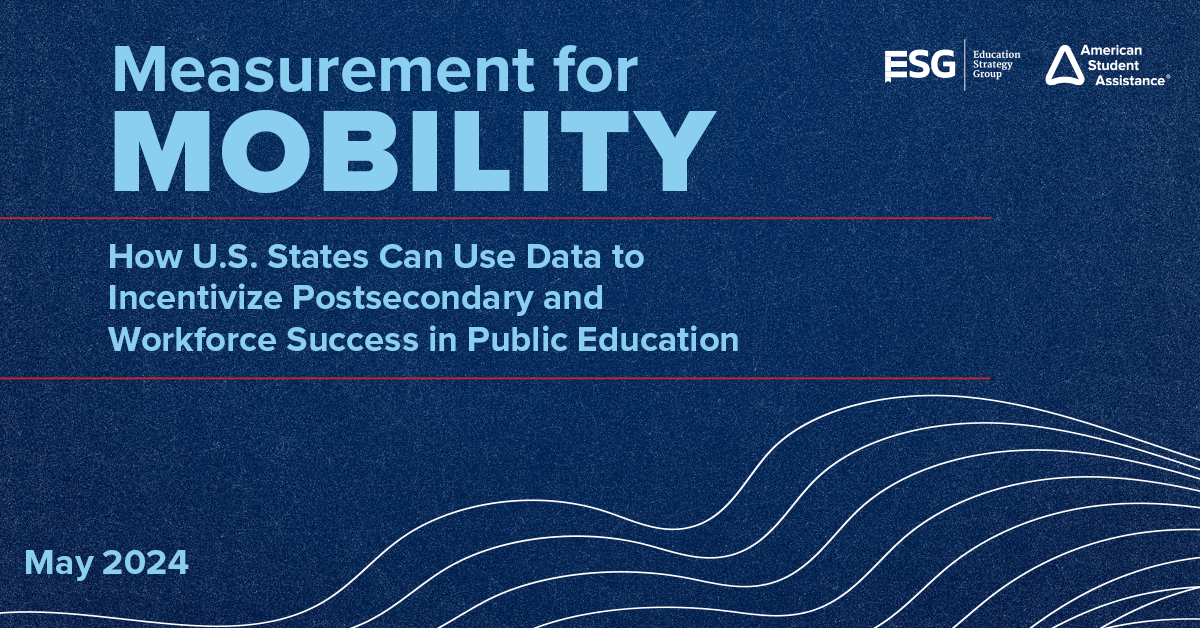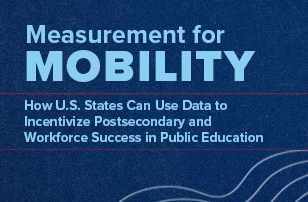Education is an economic investment, for both students and states. To maximize the return on investment and ensure that education drives economic mobility, states need K-12 and postsecondary systems to prioritize and improve the outcomes that matter most for students’ success in life after school — namely, postsecondary and workforce success.
To that end, states must monitor and encourage a focus on measures that track how well K-12 and higher education institutions are preparing students to succeed in the next phase of their education-to[1]workforce journey.
This new report, “Measurement for Mobility: How U.S. States Can Use Data to Incentivize Postsecondary and Workforce Success in Public Education,” from American Student Assistance® (ASA) and Education Strategy Group (ESG), examines how states are able to measure and support the long-term success of students in their reporting, accountability, and incentive systems. The report details how the United States has made progress in using postsecondary and workforce success metrics over the past decade, and several states now stand out as bright spots. However, the country has not fully committed to prioritizing measures to ensure that public education remains a powerful engine for economic mobility in the post-pandemic era. Now is the time for states to lead the way forward in measurement for mobility.






